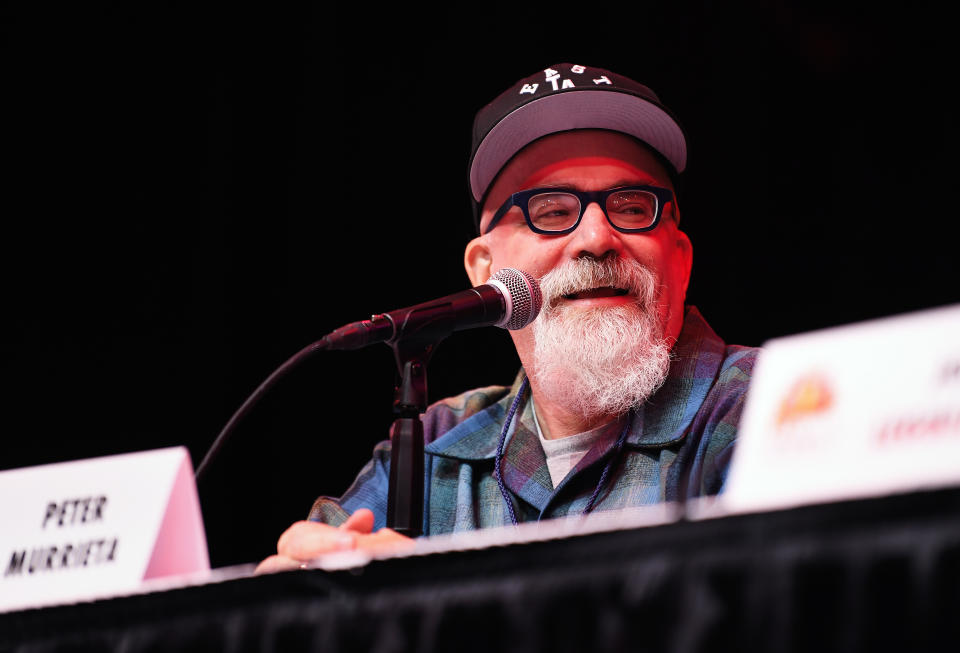ASU Sidney Poitier Film School Leaders Aim to Expand Educational Opportunities for a Changing Industry

Hollywood veterans Cheryl Boone Isaacs and Peter Murrieta are optimistic that “so much is possible” in the future as Hollywood and the entertainment industry at large expands to make room for more diverse stories and perspectives across the board.
Murrieta and Boone Isaacs spoke Thursday at an event to herald the recent launch of Arizona State University’s Sidney Poitier New American Film School, a program that launched earlier this year in downtown Los Angeles in the famed Los Angeles Herald Examiner building at Broadway and 11th. Boone Isaacs is founding director of the Poitier school while Murrieta serves as deputy director and professor of practice. The two joined several other faculty members to discuss how Hollywood can grow its business and audience base by making strides toward inclusion and representation.
More from Variety
Cheryl Boone Isaacs to Head Sidney Poitier Film School at Arizona State
Latino Collective 'La Mesa' to Host Inaugural Live Table Read (EXCLUSIVE)
Boone Isaacs and Murrieta emphasized the importance of film education being hands-on enough to set students up to hit the ground running in production jobs and related entry-level posts.
“It’s not enough anymore to take a student from a high school, into a community college to try to pass the baton off to a four-year degree. You have to answer the question, ‘How is this going to help me get a job? How is this going to help?'” Murrieta said.
Before he gained recognition as a showrunner of popular series such as Disney’s “Wizards of Waverly Place” and Netflix’s “Mr. Iglesias,” Murrieta worked his way up as a writer on numerous TV shows. He landed his first shot to create his own show, “Greetings From Tucson,” for the now-departed WB Network in 2002. The air of the industry was different at that time, he told the crowd.
Hispanic representation was suddenly on the rise at the time, Murrieta recalled. “Tucson” was inspired by his life growing up in Arizona. Showtime had the drama series “Resurrection Boulevard” while George Lopez had a family comedy sitcom on ABC. At last, it seemed change was on the horizon.
“There was this real feeling in 2002-2003 of ‘this is about to happen,'” Murrieta recalled. “We’ve been waiting. We’ve been gathering strength and speed. We’re about to do it.”
The feeling was short-lived, however, as the shows quickly went off-air within the next year or so –– all except for “George Lopez,” which ran for six seasons through 2007.
“That was it for a while. Then another wave happened and then it went away. And at some point, it occurred to me that while we’re attacking the business for representation in one way, there’s got to be another way,” said Murrieta.
The lack of representation resulted in what Poitier school leaders describe as a “a cultural emergency.” Professors Alex Rivera and Christina Ibarra cited a recent study by Latino Donor Collaborative showing that Latinos make up less than 4% of the industry’s showrunners. For directors, the number is less than 3%. On the cable side, Latino representation is even less –– almost 0% in all categories.
Murrieta’s work also includes serving as a writer and producer on shows like ABC’s short-lived “Cristela” and the Netflix-Pop TV revival “One Day at a Time.” More recently, he has been developing a project close to his lineage, “Blood & Gold: The Legend of Joaquin Murrieta,” which he co-wrote, as part of his first-look deal with Universal Television. Murrieta’s desire to give other filmmakers access to the same stepping-stone opportunities is also what inspired him to join ASU’s staff in addition to maintaining a busy career as an in-demand showrunner.

“This idea that if we’re not going to be able to take over Hollywood in this other way –– well, that’s fine. Then I’ll go somewhere and I’ll just create an army to keep coming like hundreds and hundreds coming,” said Murrieta.
ASU’s plan first starts with expanding its curriculum to include lessons in all sides of filmmaking including music and design, as well as granting more people access to earn a four-year degree in film. In addition to building close relationships with the other schools in ASU’s Herberger Institute for Design and the Arts, including the School of Music, Dance and Theatre, students are offered several more avenues for success.
“Film has great composers and great songs, many of which we remember,” said Boone Isaacs, formerly a top executive at Paramount Pictures and former president of the Academy of Motion Picture Arts and Sciences. “Most young people, they think, ‘Oh, I love music. I love sounds. I’m gonna go into the music business,’ which is so great and wonderful. But we want to educate them to many careers inside of sound.”
In addition to expanding its array of classes, Boone Isaacs shared that the school is in communication with multiple community colleges to create a program that will allow more community college graduates the chance to earn a Bachelor’s degree.
“We all know in life, there’s a lot of curves. There’s a lot of situations that make you take a right when you thought you were going to go left. We like to show our students the industry professionals who talk about the roadblocks they went through, the challenges they had,” Boone Isaacs said. “But at the end of the day, it’s the determination, the passion, the love for what you wish to do and learn about that drives you. And [students] become successful –– their own definition of successful, not someone else’s.”
(Pictured top: Cheryl Boone Isaacs)
Best of Variety
The Best Pop Culture Halloween Costumes for 2022: From 'House of the Dragon' to 'Euphoria'
Constance Wu Gets Candid in Revealing New Memoir 'Making a Scene'
Sign up for Variety’s Newsletter. For the latest news, follow us on Facebook, Twitter, and Instagram.

